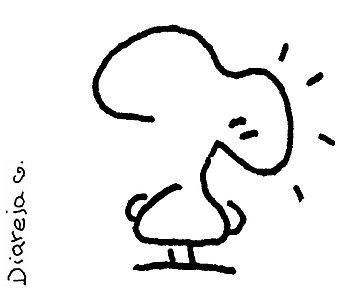

For years, Tomaž Lavrič was something of an enigma. He rarely gave interviews, even though his iconoclastic cartoons were known to almost every Slovenian. In the tense days of the late 1980s, he used his artistic talents to openly challenge the Communist orthodoxy of the day.
Lavrič has been a mainstay of the youth magazine Mladina since the 1980s, but much of his work has appeared under humorous pseudonyms, ranging from "TBC" – the Slovenian initialism for tuberculosis -- to “Josip Visarijonovič” – a reference to Stalin. His artistic styles were just as versatile, and many of his readers never realized that his diverse creations were all the work of a single artist.
However, his most influential creation was in many ways the simplest: A strip titled "Diareja" (Diarrhea), consisting of stylized line drawings and small, big nosed characters who could immediately transform into anyone, from the humble man on the street to an arrogant Yugoslav Army general.
In the late 1980s, Lavrič and Diareja set their sights on the Communist establishment and its hypocrisy. The strip targeted everyone from Branko Mamula, a corrupt Yugoslav Army general, to Slobodan Milošević and his nationalist ideology. Lavrič introduced characters of different nationalities to expose the hypocrisy of the "Brotherhood and Unity" myth that had long served as the foundation of Communist Yugoslavia. Diareja showed that the myth was unraveling as the country’s different ethnicities increasingly held very different – and incompatible -- views of what the future of Yugoslavia should look like.
Lavrič is still drawing Diareja for Mladina, but through the years, he has also become known for a host of other works, from sharply observed political caricatures to a realistic, feature-length comic about the Bosnian War. Diareja, however, remains probably his most iconic creation –a lasting symbol of an era marked by Slovenia’s democratization, the country’s drive to independence, and the painful unraveling of Yugoslavia.

































































